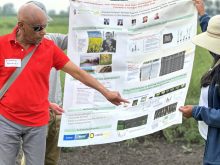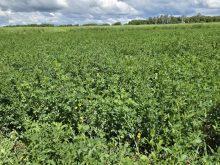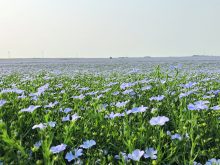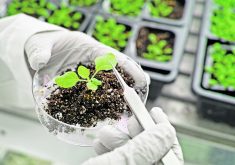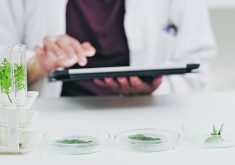Millions of people take an aspirin a day to prevent stroke and heart attack, but researchers say an active ingredient found in aspirin also gets crops off to a healthier start.
Brazilian plant scientists have discovered that the same salicylic acid that is a basic ingredient in common aspirin and skin care products holds the secret to healthier, more drought-resistant crops of black-eye peas, known as cowpeas in South America. The cowpea is one of the main sources of protein for many Brazilians.
Researchers at the State University of Paraíba found that salicylic acid enhanced germination, thus helping to drought-proof young black-eye pea plants.
Read Also

Farmer uses robot seeder, weeder
FarmDroid is an autonomous seeding and weeding robot whose efficiency and accuracy have proven to have strong economic benefits for producers.
The study began in 2012 and continues in the search for ways to mitigate crop stress in semi-arid regions, according to researcher Alberto Soares de Melo.
“The research originated due to the importance of cowpea for the population of northeastern Brazil,” said Alberto Soares de Melo.
The region is susceptible to drought because of basic soil moisture deficiencies, he added.
“It was evident that the salicylic acid application in cowpea minimized the deleterious effects of water deficiency on growth,” he said.
“The research is already in the phase of results validation with greenhouse assays and in experimental fields. The results from these trials will soon be published in journals.
“The application of this acid is a simple and cheap treatment for increasing water stress tolerance in cowpea. The increase of tolerance allows them to grow in areas with greater water irregularity.”
The salicylic acid, or “medicine” as he calls it, was applied to the seeds before planting with a goal of improving the performance of seeds as they germinate and emerge.
The seed treatment was applied by laying seeds on paper moistened with water and the acid. The water and acid enter the seed via contact with the wet paper. They also used different amounts of the acid and water to find the best combination.
These lab trials showed that the medicine lends protection from conditions such as high temperature and lack of water.
“Salicylic acid acts on responses in plants when exposed to stress condition,” he said.
“These responses are associated with increased efficiency of the enzymes which plants use to deal with stress. In particular, it increases the levels of three enzymes, all of which help the plant during drought.”
The researchers used six cowpea varieties, not all of which responded the same to the acid. It helped some overcome drought more than others.
Soares de Melo said this fact allows researchers to be more selective about which cowpea varieties are planted in drought-prone regions.
The next step will be field research with the aim of determining exactly how much water the treatment helps save.
This information is required to support their ultimate goal of expanding the area of cultivation for cowpeas, especially to areas with limited water.
“These results take us a step forward in new research on the role and route of action for salicylic acid,” he said. “The acid could minimize yield losses of cowpea and other crops cultivated under conditions of low or irregular rainfall, such as the Brazilian northeast.”
Also high on Soares de Melo’s priority list is research into using conventional seed treatment equipment to apply salicylic acid to large volumes of cowpea seed.
The application method used in the lab — direct contact of the seed with the solution — was time consuming and labour intensive.
“As for other application forms, the team is evaluating new techniques to facilitate the use by farmers, always aiming at better application efficiency.”





